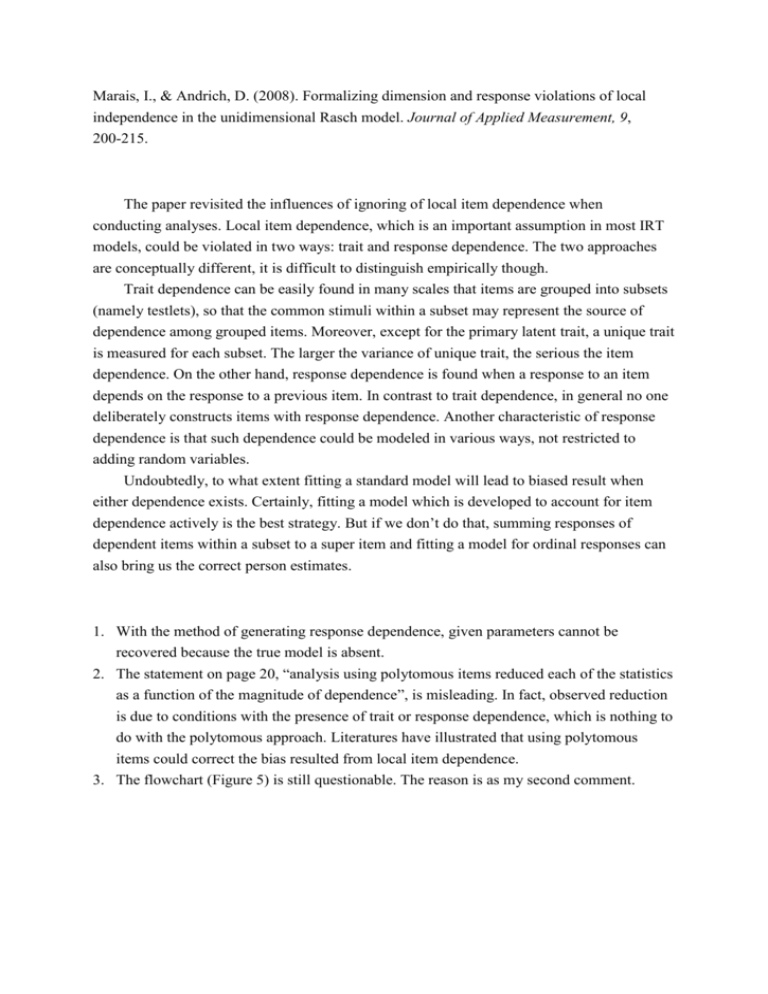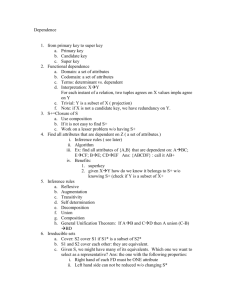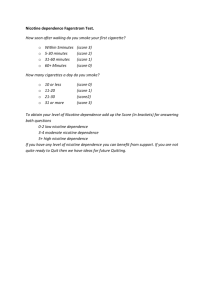comment_20121229
advertisement

Marais, I., & Andrich, D. (2008). Formalizing dimension and response violations of local independence in the unidimensional Rasch model. Journal of Applied Measurement, 9, 200-215. The paper revisited the influences of ignoring of local item dependence when conducting analyses. Local item dependence, which is an important assumption in most IRT models, could be violated in two ways: trait and response dependence. The two approaches are conceptually different, it is difficult to distinguish empirically though. Trait dependence can be easily found in many scales that items are grouped into subsets (namely testlets), so that the common stimuli within a subset may represent the source of dependence among grouped items. Moreover, except for the primary latent trait, a unique trait is measured for each subset. The larger the variance of unique trait, the serious the item dependence. On the other hand, response dependence is found when a response to an item depends on the response to a previous item. In contrast to trait dependence, in general no one deliberately constructs items with response dependence. Another characteristic of response dependence is that such dependence could be modeled in various ways, not restricted to adding random variables. Undoubtedly, to what extent fitting a standard model will lead to biased result when either dependence exists. Certainly, fitting a model which is developed to account for item dependence actively is the best strategy. But if we don’t do that, summing responses of dependent items within a subset to a super item and fitting a model for ordinal responses can also bring us the correct person estimates. 1. With the method of generating response dependence, given parameters cannot be recovered because the true model is absent. 2. The statement on page 20, “analysis using polytomous items reduced each of the statistics as a function of the magnitude of dependence”, is misleading. In fact, observed reduction is due to conditions with the presence of trait or response dependence, which is nothing to do with the polytomous approach. Literatures have illustrated that using polytomous items could correct the bias resulted from local item dependence. 3. The flowchart (Figure 5) is still questionable. The reason is as my second comment.






